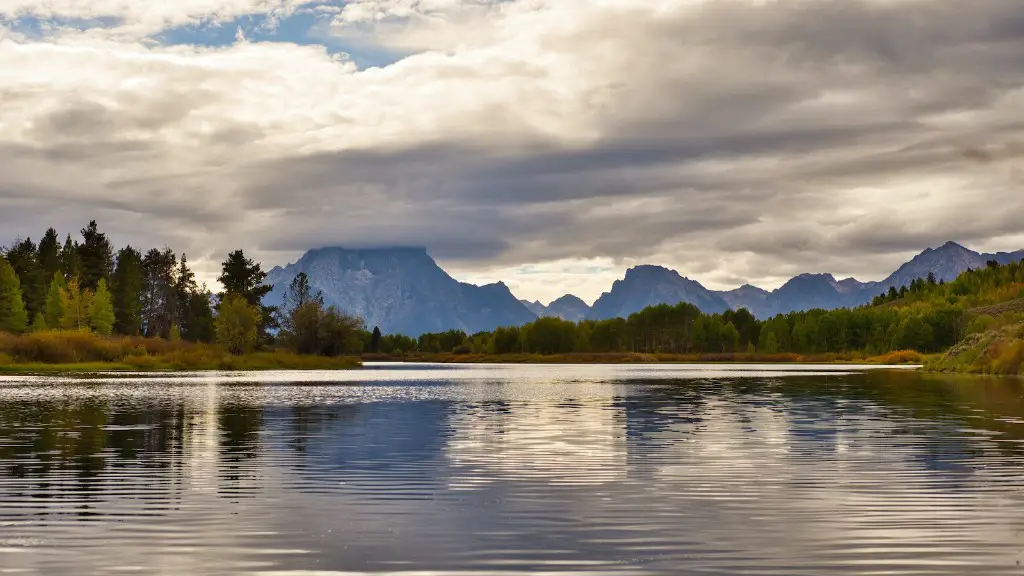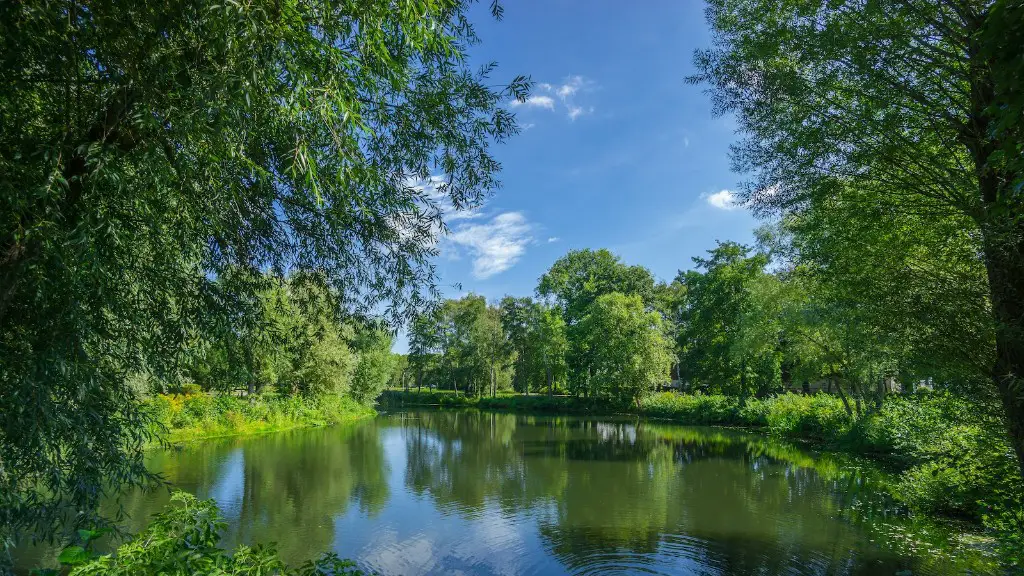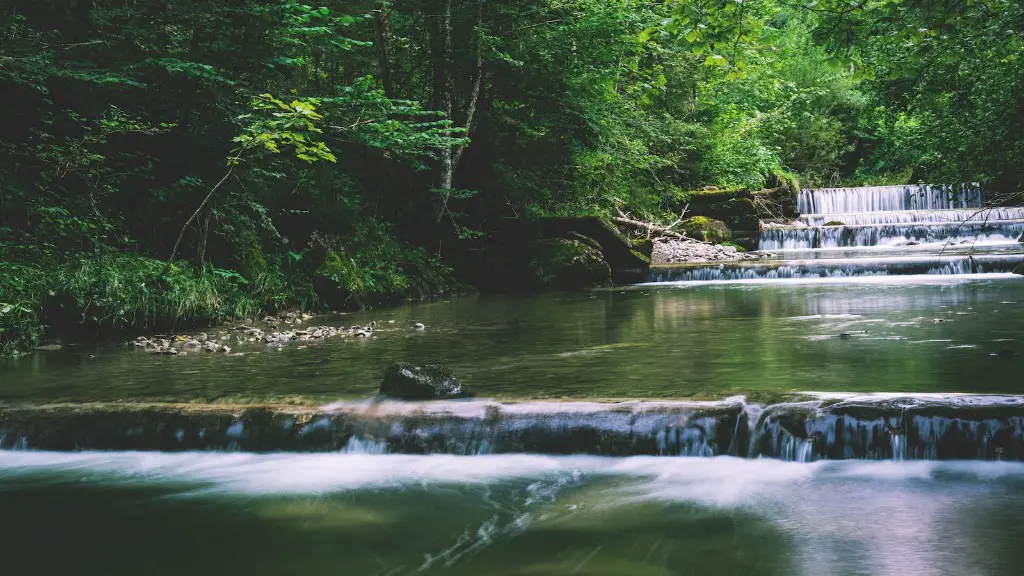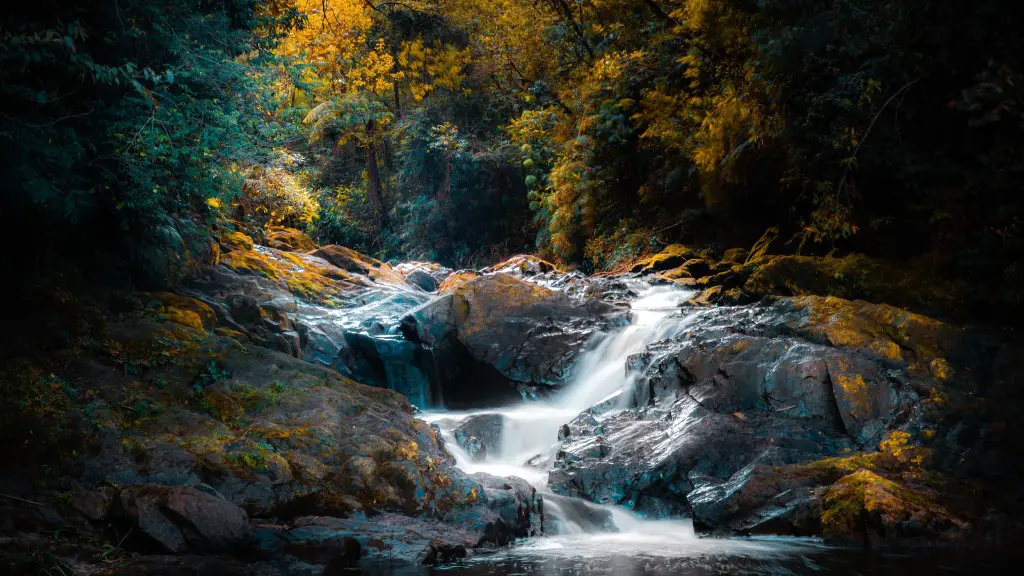The Formation of the Mississippi river
The Mississippi river is a major river in the United States, with a total length of 2,320 miles. It is the largest waterway in North America, forming the boundary between 10 states (Arkansas, Illinois, Iowa, Kentucky, Louisiana, Minnesota, Mississippi, Missouri, Tennessee, and Wisconsin). It is also the fourth-longest river in the world. The Mississippi river is the most important inland waterway in the United States, and it carries more cargo than the Panama Canal and the Suez Canal combined. The river is also the source of many recreational activities, ranging from fishing and boating to rafting and swimming.
The formation of the Mississippi river dates back to the Pleistocene era during the period of glaciation. During this time, extensive glacial deposits, known as moraines, covered much of North America. As the glaciers melted, vast amounts of water started to rush through the valleys and flood plains, forming numerous rivers and lakes. One of the most prominent of these was the Mississippi river, which began to form approximately 18,000 years ago.
The rediscovery of the Mississippi river happened in 1541, when Spanish explorer Hernando de Soto encountered the river near present-day Memphis, Tennessee. He named it Rio de Espiritu Santo. Over the next few hundred years, the Mississippi river played an important role in the exploration and colonization of North America. In 1682, French explorer Robert Cavalier eventually renamed it the Mississippi river.
The Mississippi river has changed drastically over the last few centuries. As more and more people moved into the basin, many of the river’s natural wetlands, which were the ecosystems that defined the river, were destroyed and replaced with agricultural lands. This led to the degradation of water quality and put the native species of fish and other aquatic life at risk. Pollution was also a major problem during the 19th and 20th centuries, as many industrial and agricultural chemicals were deposited into the river.
The river has also been increasingly impacted by climate change. Rising temperatures, increasing precipitation, and expanding cities have all contributed to the degradation of the river’s environment. For instance, increased flooding and extreme weather events have caused massive erosion along the banks of the Mississippi river, resulting in greater flooding risks in its basin. In addition, the river’s water levels have been heavily impacted by rising sea levels.
Due to the increasing environmental challenges, conservation projects have been set up to protect the river. Many of these involve the restoration of wetlands along the river, as well as increased pollution prevention efforts. In addition, some cities, such as Memphis, have started to invest in urban forestry initiatives to help absorb stormwater runoff from the river. These types of projects help to reduce both flooding risks and water pollution.
Public Health Concerns
The environmental challenges of the Mississippi river not only affect the river’s flora and fauna, but can also have serious public health implications. For instance, the increase of pollutants, such as nitrogen and phosphorus, in the river can create harmful algal blooms which can contaminate drinking water sources. Other pollutants, such as heavy metals, can also contaminate drinking water, while chemicals and biosolids can cause dangerous diseases such as cancer, liver disease, or gastrointestinal problems.
To protect public health, the Environmental Protection Agency (EPA) has set up regulations on water pollution to protect the water quality of the Mississippi river. Under the Clean Water Act, the EPA has set limits on the types and amount of pollutants that can be released into the river. However, without enforcement, these limits can be hard to maintain and many of the industrial and agricultural facilities that the EPA regulates are not properly following these regulations.
In addition to enforcing regulations, community efforts play an important role in protecting the water quality of the Mississippi river. For instance, projects such as educational programs, green infrastructure initiatives, and citizen science programs can help to reduce water pollution and improve public health. Programs such as Citizen Science Monitoring in Action provide education and resources to local communities so they can test and monitor the water quality of their local rivers.
Another important step for the protection of the Mississippi river is the management of non-point source pollution. Non-point source pollution is pollution that comes from runoff from agricultural or urban areas. To reduce this type of pollution, green infrastructure initiatives, such as the planting of vegetation, can be implemented to absorb the pollutants.
Impact of Dams and Levees
While the Mississippi river can be heavily affected by human activity, some of the most dramatic impacts come from large-scale infrastructure projects. For instance, the construction of many dams and levees along the Mississippi River have dramatically changed the way the river flows, resulting in the flooding of some areas and the drying out of others.
The Mississippi River Dam System is a network of more than 200 dams and locks which are used to regulate the river’s flow, manage flooding, and generate hydropower. However, this system has had a major impact on the ecology of the river, and has fragmented the once-continuous ecosystem into disconnected regions, resulting in the extinction of some species and the decimation of others.
The levees built along the river have also had an impact on the river’s ecology. By preventing flooding, these levees have reduced the amount of fresh water entering the Delta and estuaries, thus reducing the amount of nutrients and sediment available for the marsh ecosystems and altering habitats for marine species.
The use of the river for navigation has also had an impact. While the locks have allowed for boats to navigate the entire length of the river, they have caused bottlenecks, resulting in increased sedimentation and ecological degradation.
The impacts of the Mississippi River Dam System and the levees have been of great concern in recent years. To address these concerns, the U.S. Army Corps of Engineers has taken steps to reduce the impacts of these projects. For instance, the Corps has modified the locks to allow for more freshwater to enter the Delta, and has passed the Living Rivers Initiative to restore natural flooding regimes and restore habitats.
Economic Impact
The Mississippi river has played an important role in the economic development of the United States for centuries. The river has been used for transportation, irrigation, and navigation, and has had an important impact on the economies of the adjacent states. In recent years, the river’s ecosystems have become a major economic resource as well, due to tourism, recreation, and fisheries.
In terms of transportation, the Mississippi river is the most significant inland waterway in the United States. In 2017 alone, more than 5 billion tons of commodities were transported on the river, including coal, oil, grain, and chemicals. In addition, the depth of the river has allowed for shipping with deep draft vessels, which have significantly increased the efficiency of transportation.
The Mississippi river is also home to an abundant fishery, which is estimated to bring in more than $1 billion per year. The river has a variety of habitats which allow for the production of several commercial and recreational fish species, such as bass, catfish, and sturgeon.
The river is also a major tourist destination, attracting more than 10 million visitors each year. Tourism on the Mississippi river supports 40,000 jobs and generates about $3 billion in revenues each year. Many people visit the river for recreational activities, such as boating and fishing, as well as educational and historic sites.
The impacts of the Mississippi river reach beyond its geographic boundaries, as it is a major component of the global economy. The river’s transportation and tourism activities contribute to the economic growth of many industries, while its fisheries are a major source of food and economic activity in the region.
Ecological Benefits of the River
In addition to its economic importance, the Mississippi river is also an ecological marvel. It is home to a wide variety of wildlife, including over 250 species of fish, many species of waterfowl, and numerous wildlife species. In addition, it is one of the most biologically diverse rivers in North America, and is recognized as an Important Bird Area by the Audubon Society.
The abundance of wildlife in the river is due to its complex and varied ecosystem. In particular, the Mississippi river has a large floodplain, which creates a wide variety of habitats, such as wetlands, woodlands, bottomland forests, and aquatic systems.
The wetlands in the floodplain are particularly important, as they help to filter pollutants and regulate water flow. They also provide important habitat for aquatic insects, songbirds, shorebirds, waterfowl, amphibians, reptiles, and fish. In addition, the wetlands are also important spawning grounds for many fish species, including the endangered pallid sturgeon.
The bottomland forests also provide important habitat for many species of wildlife. These forests are home to some of the most diverse bird communities in North America, and are also important for mammal and invertebrate diversity. The forests are also beneficial to people, providing recreational opportunities and aesthetic beauty.
In addition to its wild flora and fauna, the Mississippi River also has a rich cultural history. Many Native American tribes have called the river home for centuries, and it has been an important transportation corridor since the 19th century. Together, the natural and cultural features of the river have created an important and unique ecosystem.
Environmental Challenges
Despite its importance, the Mississippi river is facing a number of environmental challenges. In particular, the river is threatened by pollution, decreased water quality, and increased sedimentation. In addition, the river is increasingly impacted by rising temperatures and extreme weather events, and is highly vulnerable to the effects of climate change.
The largest source of pollution in the Mississippi river is non-point source pollution, resulting from runoff from agricultural and urban areas. These pollutants, ranging from fertilizers and pesticides to oils and heavy metals, can contaminate the river and put public health at risk. In recent years, there has been an increased emphasis on preventing this type of pollution, through green infrastructure initiatives, public education programs, and citizen science.
The water quality of the Mississippi river has also been affected by invasive species, such as the Asian carp. These species can compete with native fish species for food and habitat, causing them to decrease in numbers. In addition, invasive species can cause drastic changes to the river’s ecosystem, devastating the species that depend on it.
The sedimentation of the Mississippi river has also been a major issue in recent years. As sediment builds up, it can fill in necessary fish spawning grounds, resulting in a decrease in fish population. In addition, sediment can block sunlight and lower concentrations of essential nutrients, resulting in an overall decrease in biodiversity.
Finally, climate change is having a major impact on the Mississippi river. Higher temperatures, more extreme weather events, and rising sea levels have all had an impact on the river, resulting in increased flooding risks and water pollution.
Solutions
In response to the environmental challenges of the Mississippi river, a number of solutions have been proposed. In particular, the Environmental Protection Agency (EPA) has taken steps to regulate water pollution and protect public health. The EPA has implemented regulations on wastewater discharges, and has also passed the Clean Water Act, which sets limits on the amount of pollutants that can be released into the river.
Community efforts have also been important for protecting the Mississippi river. Non-profit organizations, such as Action Network and American Rivers, work with local communities to help protect the river and its ecosystem. Educational programs, green infrastructure initiatives, and citizen science initiatives are also helping to reduce water pollution and protect the river’s ecosystem.
In addition, conservation projects have been set up to protect the river, restore its wetlands, and improve water quality. The U.S. Army Corps of Engineers has also taken steps to reduce the impacts of the Mississippi River Dam System and the levees, such as modifying the locks to allow more freshwater to enter the Delta.
Finally, the increasing public awareness of the threats to the Mississippi river has helped to draw attention to the issue and promote solutions. Officials, organizations, and citizens all across the country have been working together to protect the river and its valuable ecosystems.





